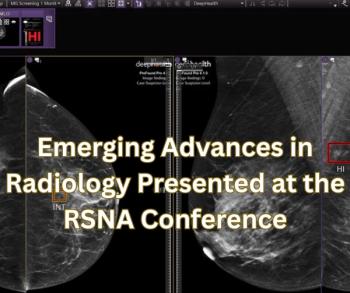
PET/MR Enterography for Stricture Differentiation in Crohn Disease
Evaluation of noninvasive PET/MR enterography on differentiation of strictures in patients with Crohn disease.
PET/MR enterography may be a noninvasive way to help differentiate purely fibrotic strictures from mixed or inflammatory strictures in patients with Crohn disease, according to a study published in
Researchers from Italy and the United States performed a small retrospective study (19 patients) to evaluate the use of PET/MR enterography to differentiate fibrotic strictures from inflammatory strictures in this patient group.
All patients had Crohn disease and strictures for which they underwent surgical resection, received with pathologic confirmation. Two radiologists and a nuclear medicine physician in consensus evaluated the following bowel wall PET/MR enterography biomarkers, obtained by PET/MR enterography:
• Signal intensity (SI) on T2-weighted images
• Apparent diffusion coefficient (ADC)
• PET maximum standardized uptake value (SUVmax)
• SI on T2-weighted images × SUVmax
• ADC × SUVmax values at levels that corresponded to pathologic specimens[[{"type":"media","view_mode":"media_crop","fid":"46388","attributes":{"alt":"abdominal imaging","class":"media-image media-image-right","id":"media_crop_2555401261060","media_crop_h":"0","media_crop_image_style":"-1","media_crop_instance":"5379","media_crop_rotate":"0","media_crop_scale_h":"0","media_crop_scale_w":"0","media_crop_w":"0","media_crop_x":"0","media_crop_y":"0","style":"height: 135px; width: 180px; border-width: 0px; border-style: solid; margin: 1px; float: right;","title":"©Spectral-Design/Shutterstock.com","typeof":"foaf:Image"}}]]
They compared the MR, PET, and hybrid PET/MR biomarkers, and they assessed performance for differentiation of inflammatory strictures from fibrotic strictures.
The results showed that SUVmax, SI on T2-weighted images × SUVmax, and ADC × SUVmax all showed significant differences in the fibrosis group compared with the fibrosis with active inflammation group and the active inflammation only group. “The best discriminator between fibrosis and active inflammation was the combined PET/MR enterography biomarker ADC × SUVmax cutoff of less than 3,000, which was associated with accuracy, sensitivity, and specificity values of 0.71, 0.67, and 0.73, respectively,” the researchers wrote.
The researchers concluded that using PET/MR enterography to assess patients with Crohn disease offers a potential noninvasive technique for the differentiation of purely fibrotic strictures from mixed or inflammatory strictures.
Newsletter
Stay at the forefront of radiology with the Diagnostic Imaging newsletter, delivering the latest news, clinical insights, and imaging advancements for today’s radiologists.




























